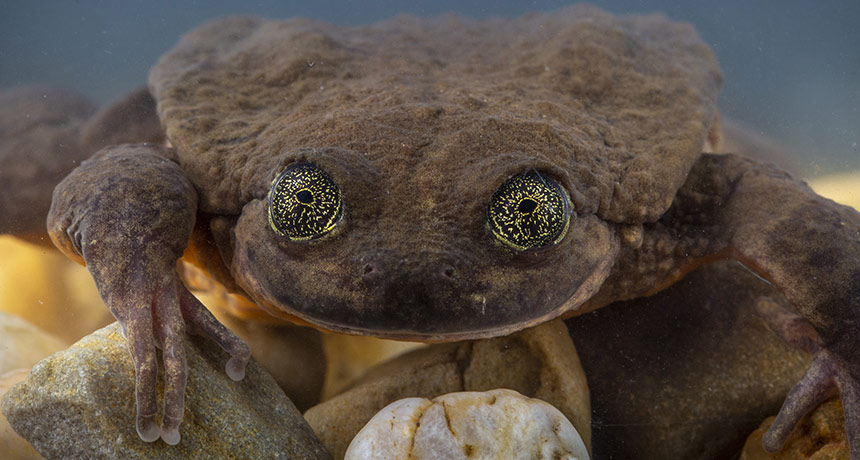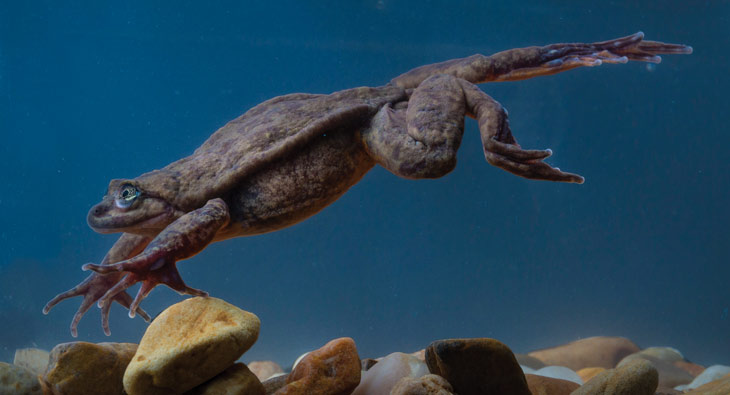
CHYTRID SURVIVOR After a decade in which people feared they were extinct, five Sehuencas water frogs have been discovered in Bolivia, including this female named Juliet. Researchers plan to introduce her to Romeo, a frog in captivity that until now was the last known survivor of his species.
Robin Moore







